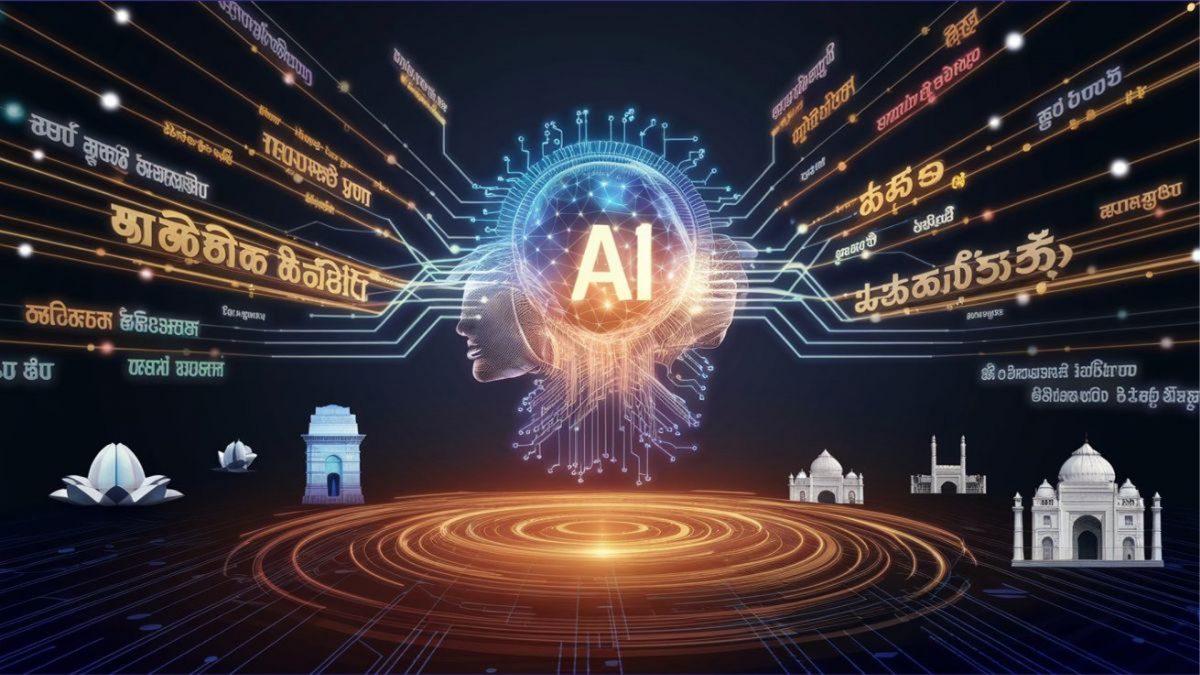
This wasn’t a piece I was planning to write. To be honest, Artificial Intelligence scares me. The limitless possibilities that it provides, and human greed are a deadly cocktail.
Even so, we cannot possibly ignore AI, a profound technological leap that comes once in a few centuries and changes the world as we know it. The DeepSeek shock has too many repercussions to ignore, and even more so for India. What is our stake in the future that is being shaped right now? Having lost the manufacturing race to China, how do we plan to catch up with the leaders in AI as a global innovation cycle is upon us? What may be the consequences of losing this battle, though admittedly the technology is still at infancy? What would it mean for the world’s most populous nation to be a rule-taker instead of a rule-giver in AI? For a poor country that holds neither the world’s reserve currency nor the resources of a trade-surplus China, what is our plan to at least stay in the race with the leaders? Are our policies in place? Do we have a robust R&D mechanism to speak of? Do our political or even industry leaders have a clear plan to rope in investors, capital, innovators, founders, researchers in a virtuous cycle, ensuring adequate infrastructure, stable supply chains and talent pool? Or shall we remain satisfied with headline-grabbing announcements? Let me at the very outset clarify that I do not have the answers to these questions.

However, China, India’s greatest adversary, the country with whom we share many attributes and until a few decades ago had comparable economies and per capita incomes, in a twist of fate might have some of the deep answers that we seek. For example, China showed a few days ago that you don’t require a godawful amount of money, monstrous data centres and cataclysmic computing power to innovate in the AI race. The DeepSeek shock has been seismic for a number of reasons, not the least because China has shot an arrow across the bow, warning the Silicon Valley czars and global moneybags that its engineers can do more with less, and there is no limit to human enterprise when faced with obstacles if there is determination.
It is this that has shocked Americans the most and shaved a few hundred billion dollars off tech stocks. So far, the Silicon Valley tech bros sold the vision that they are the sole determinants of the technology-driven human future, and investors readily bought the narrative. China came along and showed how overvalued, and even misleading the American ‘god complex’ is.
The resultant reassessment erased around $1 trillion from the market as AI-related stocks including Microsoft, Nvidia., Oracle and Alphabet (Google’s parent) took a whipping. Nvidia alone lost $593 billion in market cap, a record one-day loss for any company on Wall Street.
The loss of ‘American tech exceptionalism’, as Catherine Thorbecke puts it in Bloomberg, could be the biggest morale booster for nations that are behind the curve in AI breakthroughs such as India. It shows AI models that may match or even outperform the glamorous chatbots can do so in shoestring budgets, and entire tech ecosystems can thrive without the need for eye-watering superstructures. DeepSeek, the Chinese AI startup, has been around for a couple of years and laid out impressive progress since last year when it came out comparative AI models that attracted Silicon Valley attention, but what really changed the game is its reasoning model, R1, unleashed on January 20.
It is a free, open source LLM (large language model) that can give its much vaunted American cousins such as OpenAI’s ChatGPT, Google’s Gemini, Meta’s Llama or Anthropic a run for their money at a fraction of their development cost. The Chinese startup claims that its R1 model is based on DeepSeek V3 that uses lower-capability Nvidia H800 chips for training, and at under $6 million, that makes R1 20 to 50 times cheaper than OpenAI’s o1 model ($540 million). While Chinese claims may be taken with a large pinch of salt given the massive state assistance that its private players enjoy, it is still impressive cost-effectiveness compared to the estimated $250 billion big American cloud companies are slated to spend this year on AI infrastructure, reports Reuters.
And DeepSeek is just one of the many Chinese AI models on the anvil that are driving greater innovation for less, to go with its robust semiconductor industry that has managed to progress at lightning speed despite America’s all-out efforts to kneecap China’s AI ambitions. Just last week China created a $8.2 billion AI investment fund, days after the United States imposed fresh export restrictions on high-end semiconductor chips, and in Alibaba Cloud’s Qwen-2.
5-1M, Baidu’s Ernie Bot, ByteDance’s Doubao 1.5 Pro and Moonshot AI’s Kimi k1.5 it has a host of new generation AI chatbots to boast of.
For Beijing, developing sovereign AI is a national security priority and its progress is a marvel in private-public initiative. While the Chinese state is working hard to improve capacity constraints, go around the limits imposed by the US from accessing its semiconductors and advanced technologies, its industry leaders are “offering talent programs and subsidies, and there are plans to open AI academies and introduce AI education into primary and secondary school curriculums.” It has been interesting to see America’s reaction.
American tech leaders appear rattled. San Francisco-based OpenAI, headed by Sam Altman has accused DeepSeek of ripping off its training data through a process called ‘distillation’ which by itself is common in the AI field but violates OpenAI’s ‘terms of service’ in the sense that it cannot be used to build a rival service. A touch ironic for a company that is being sued by a bevy of newspapers led by New York Times for infringing on copyrighted material.
Altman immediately vowed to release “better models” and “fast-track product releases” and on Saturday, OpenAI announced the launch of ‘o3-mini’, its latest in the family of ‘reasoning models’. The ChatGPT maker claimed ‘o3-mini’ is its “most cost-efficient model in reasoning series”, that is “fast, powerful” and delivers “exceptional STEM capabilities—with particular strength in science, math, and coding—all while maintaining the low cost and reduced latency of OpenAI o1-mini.” Mark Zuckerberg’s Meta is creating “several war rooms” where employees are reverse engineering DeepSeek’s technology, reports New York Times.
The Trump administration, meanwhile, is treating DeepSeek, whose downloads have surpassed that of ChatGPT in iOS, as a national security risk and US National Security is “looking into” the potential security implications of the Chinese startup that Americans fear may double up as a spyware. As the AI race intensifies, where is India in this debate? A churn is evident at least in the online space since DeepSeek dropped R1 and shook the globe. It is noticeable more for its pessimism and a fatalistic view of India’s prowess (or lack of it) in the AI innovation cycle, and disparity at the widening gap between India and the leaders on AI.
China’s leap into the future has caused a massive amount of heartburn, even if understandably so. A societal response has seen a number of suggestions being offered, including volunteering and pioneering efforts. Sridhar Vembu, founder and CEO of Chennai-based tech firm Zoho Corporation, has announced that he is stepping down from his role and focusing on “R&D initiatives”.
Wingify’s Paras Chopra, who recently sealed a $200 million exit deal with Everstone Capital, declared on X that he is assembling a team to build a ‘highly efficient’ reasoning model and a foundational AI lab that produces SOTA (state of the art) models for the world. I'm starting something soon. Join me in making state-of-the-art AI models for the world from 🇮🇳India.
pic.twitter.com/OKYogfsvaA San Francisco-based Perplexity AI CEO Aravind Srinivas also announced on X that he is committed to investing $1 million and devote five hours of his time every week to help a team train foundational models and ‘make India great again’ in AI.
Certain other suggestions have also come up. For example, to create an Indian DARPA with a seed funding of $3 billion over 3 years that “will work solely on research projects and their funding will be decided by purely outcomes of foundation model quality.” Protectionism vs Indian National AI Muscle building program -------------------------------- Thanks for bringing up this very important question, Sadanand - I should have been clearer in my eassay.
The idea is NOT to restrict customers' AI technology choice - it is counter...
pic.twitter.com/pIlmirD9Hh What has been the government’s response? The Narendra Modi government came up with a slew of announcements on Thursday that included, among other things, a plan to host DeepSeek on Indian servers.
India, that has so far worked downstream of foreign AI foundational models to create applications based on the LLM services, is also poised to get an LLM of its own as part of the Rs 10,370 crore IndiaAI Mission, according to Union IT minister Ashwini Vaishnaw. India’s generative model could come within “six to eight months” and the government has apparently selected 10 companies that will supply 18,693 graphics processing units or GPUs needed for high-end computational infrastructure to develop the LLM tailored specifically for India. The minister said the government is in touch with “six major developers” to achieve this objective, and the GPU services will available immediately for researchers and startup founders at a subsidy.
Colour me sceptical. The minister’s announcements came so close on the heels of DeepSeek’s R1 release that it sounds more like expectation management and an attempt at mitigating pervading pessimism than a well-rehearsed policy decision. If developments were at such an advanced stage – according to Vaishnaw the LLMs could be rolled out as soon as four months at an optimistic timeline – then it is curious that New Delhi waited until the Chinese dropped the bombshell.
It is also curious that Infosys co-founder Nandan Nilekani, who helped the Modi government develop the Aadhar biometric ID system and is considered close to the establishment’s thinking, was quoted as saying as recently in December that India would be better off investing in cloud technology and computing infrastructure than building its own LLM. In any case, four to eight months is not a deadline far into the recesses of the future. The government will be held to its word.
I have a larger point to make, however. To make sovereign development of AI a matter of utmost priority and a national security imperative, to build an innovation ecosystem, to hold on to the talent pool, to develop an R&D mindset, to increase the domestic appetite for bleeding-edge research, to encourage risk-taking among investors and founders – the force that brings it together, fuels ambition, gives shape to the vision of taking India forward in future skills is politics. Regardless of a rambunctious, robust democratic political system’s internal disagreements and even animus, a country should be able to rise above partisanship when it comes to critical goals.
That unity of purpose beyond differences is nowhere to be found, and I blame the political system that incentivizes mutual animosity and myopic opportunism for it. India’s growth is slowing, market sentiment has taken a beating, the Economic Survey has pegged the growth forecast at 6.3-6.
8 per cent for 2025-26, which isn’t that great, liquidity is tight, rupee is in a freefall and states are outcompeting each other on fiscal profligacy amid a freebie-culture epidemic. It is easy to berate the political leadership for their silly bickering over Yamuna water poisoning, race to the bottom over freebies, attempt at exacerbating and exploiting caste divides , the absolute degradation of pubic discourse. The real question is, does any political party have the option of not joining the race to the bottom? If not, why not? Does any political party have the luxury to stay away from the freebie race? Can the commentators who make a career out of scolding political parties for not carrying out ‘hard reforms’ explain why parties shy away from doing so except plucking the lowest hanging fruits? What incentive does even a seemingly popular leader have in imparting bitter pill on voters who may vote her/him out at the first opportunity, not to speak of Opposition and the entire civil society/activist/media/ NGO ecosystem taking up collective cudgels against the said reforms? Pink paper columnists hardly ever win elections.
The pessimism that we see in India, that eventually affects our body politic and prevents us from reaching our objectives, is downstream from a very big ask from a relatively small percentage of the population. Many of them do not agree with the terms of this social contract. They vote with their feet.
In the process, we lose some of our best talents. An efficient way must be found. There is no magic pill.
Improving the prospect of technological innovation can’t be done by announcements alone if these are not backed by a robust R&D ecosystem, improvement in the quality of human resources along with foundational change in primary education. At the other end, top talents must be retained, absorbed and rewarded. I wish I could have ended this piece on a more optimistic note.
Perhaps the chance is just round the corner. The writer is Deputy Executive Editor, Firstpost. He tweets as @sreemoytalukdar.
Views expressed in the above piece are personal and solely those of the author. They do not necessarily reflect Firstpost’s views..















